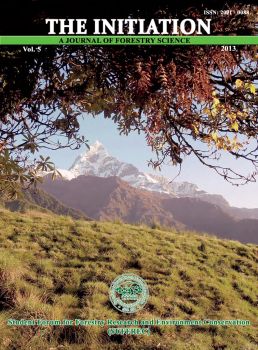Lowland Wetlands in Nepal
DOI:
https://doi.org/10.3126/init.v5i0.10269Keywords:
Lowland Wetlands, Classification, Current Status, Policies, ThreatAbstract
Wetlands are considered to be one of the most threatened of all major natural ecosystems and are claimed to deserve a high priority for conservation and sustainable use. The conservation of wetlands is important because it provides a multitude of benefits i.e. ecological, economic, aesthetic, religious and socio-cultural benefits. This paper attempts to gather information about significance and classification of wetlands on the one hand and current status of lowland wetlands of Nepal and their threats on the other. Wetland dependent communities account for more than 17 % of the country’s population out of which more than 90 % are of Terai origin. As a result, a close interaction takes place between local community and biological resources of the wetlands. It with increase in population causes a number of threats to wetland ecosystem and associated biodiversity. These threats can be broadly categorised as habitat destruction and degradation, loss of ecosystem integrity, and depletion of species abundance and diversity. The importance of wetlands and their threats has been recognized in Nepal and different legislations have been formulated regarding Nepal Wetland Policy 2069 recently. But the policies itself cannot manage the wetlands without its appropriate implementation. Current status of wetlands is decreasing which shows a greater need of review and strong implementation of the existing policies.
DOI: http://dx.doi.org/10.3126/init.v5i0.10269
The Initiation 2013 Vol.5; 182-193

